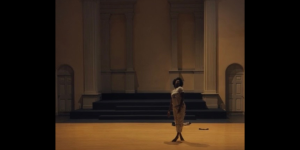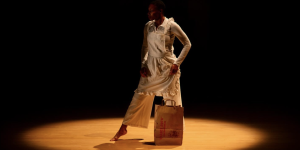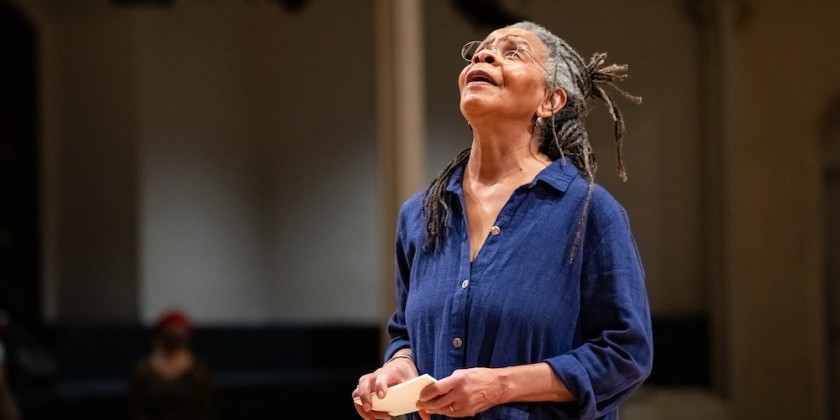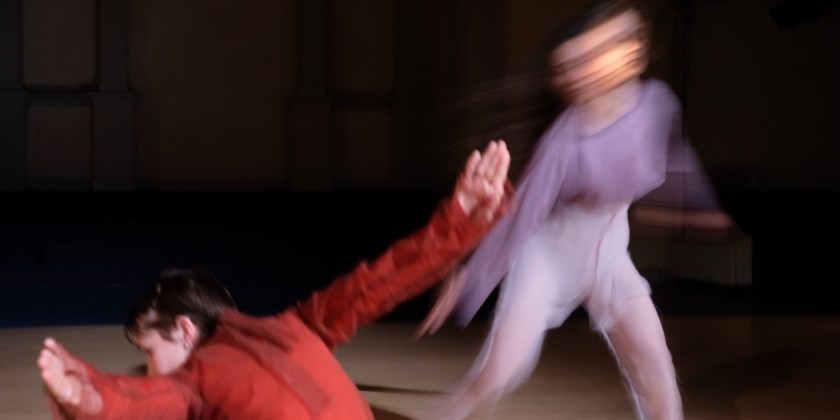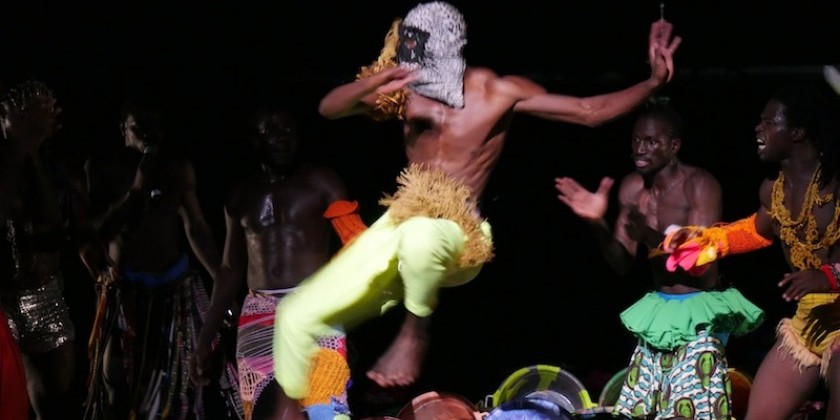A Day With Dots
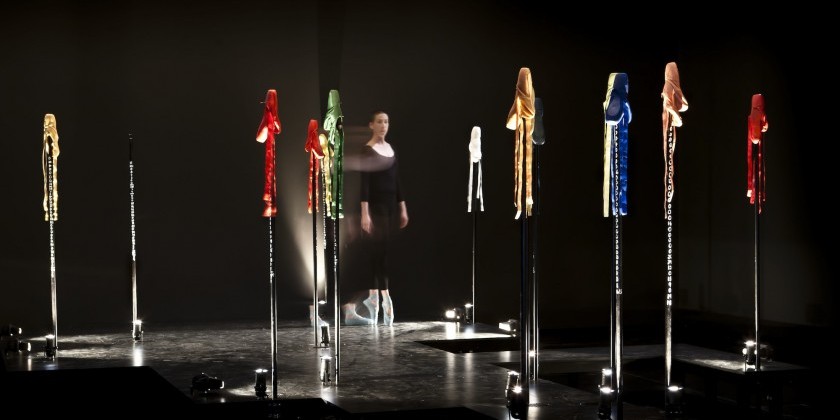
Suzanne Bocanegra's - Living Sculpture: "Little Dot" at Danspace
Little Dot, a twelve-hour ballet installation, will have its New York premiere at Dansspace Project on September 27, 2014.
For ticket information go to Danspace Project's website
*When this article was first published, we incorrectly identified the collaborating ballet company as New York City Ballet. The collaborating ballet company is The New York Theatre Ballet.
When asked what she might want the audience to expect from Little Dot at Danspace Project, Suzanne Bocanegra’s immediate response is, “I want it to be a really meditative experience.” The work incorporates fourteen ballet dancers, but Bocanegra will quickly clarify that it is not your typical dance work. She calls Little Dot “a living sculpture.” So how, one might ask, do you get from dot painting to living sculpture?
When Suzanne Bocanegra was a young girl growing up in Houston, she fell in love with George Seurat’s painting Young Woman Powdering Herself. She would return to Houston’s Museum of Fine Arts often to stare at the painting and imagine all of those little dots falling on the ground. She pictured herself sorting them all like tiny beads. “And for some reason, five or six years ago,” she reflects, “I thought why don’t I just get a reproduction of the painting and pretend that I’m doing that if I want to do it so bad.”
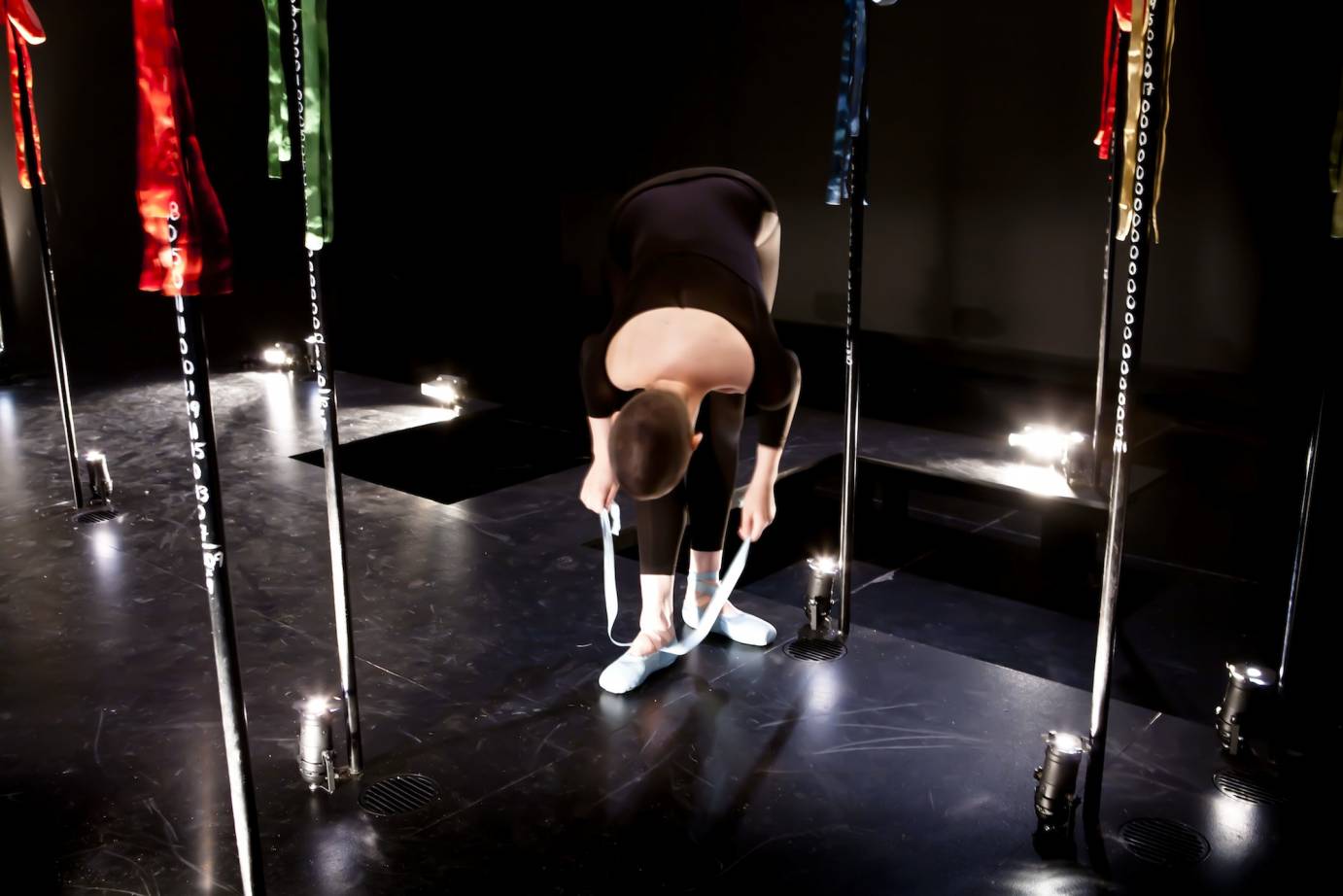
Bocanegra spent months with a magnifying glass and a reproduction counting and sorting dots. Sometimes she would lose count and simply start over. What may seem like torture to the common person was a meditative experience for her.
Once the chart was finally completed, it sat in Bocanegra’s studio becoming another, not-quite-forgotten inspiration, the likes of which many artists are known to hold on to. Luckily, when the Tang Teaching Museum curated her work in 2010, they asked Bocanegra about any new work she might be interested in sharing. Immediately, she thought of the chart of little dots. The museum gave her full reign including the option to paint the walls of the installation space. So she painted the walls black creating a black box “performance space” to contrast with the white walls throughout the museum. But what did the dot chart become? This is where ballet enters her creative process:
“I was reading about Seurat’s life in France while reading about the history of ballet. I was thinking about how ballet is based on these very weird rules. It’s very idiosyncratic and that’s how Seurat did his paintings. He has rules about how you should paint and how the viewer perceives things based on scientists who, at the time, were dealing with color. He translated their findings into ideas about making dots. He had this idea that if you put complimentary colors together it will blend in your eye, but it doesn’t. It’s still dots. Those paintings are really fascinating even though he got to them through a strange and almost wrong-headed frame of thinking. Ballet is a little like that too. It starts out with these court dances and then there’s these different rules and positions. A man does it this way and a woman does it that way and there are certain kinds of bodies that you’re supposed to have – and that’s all pretty strange and nutty too.”
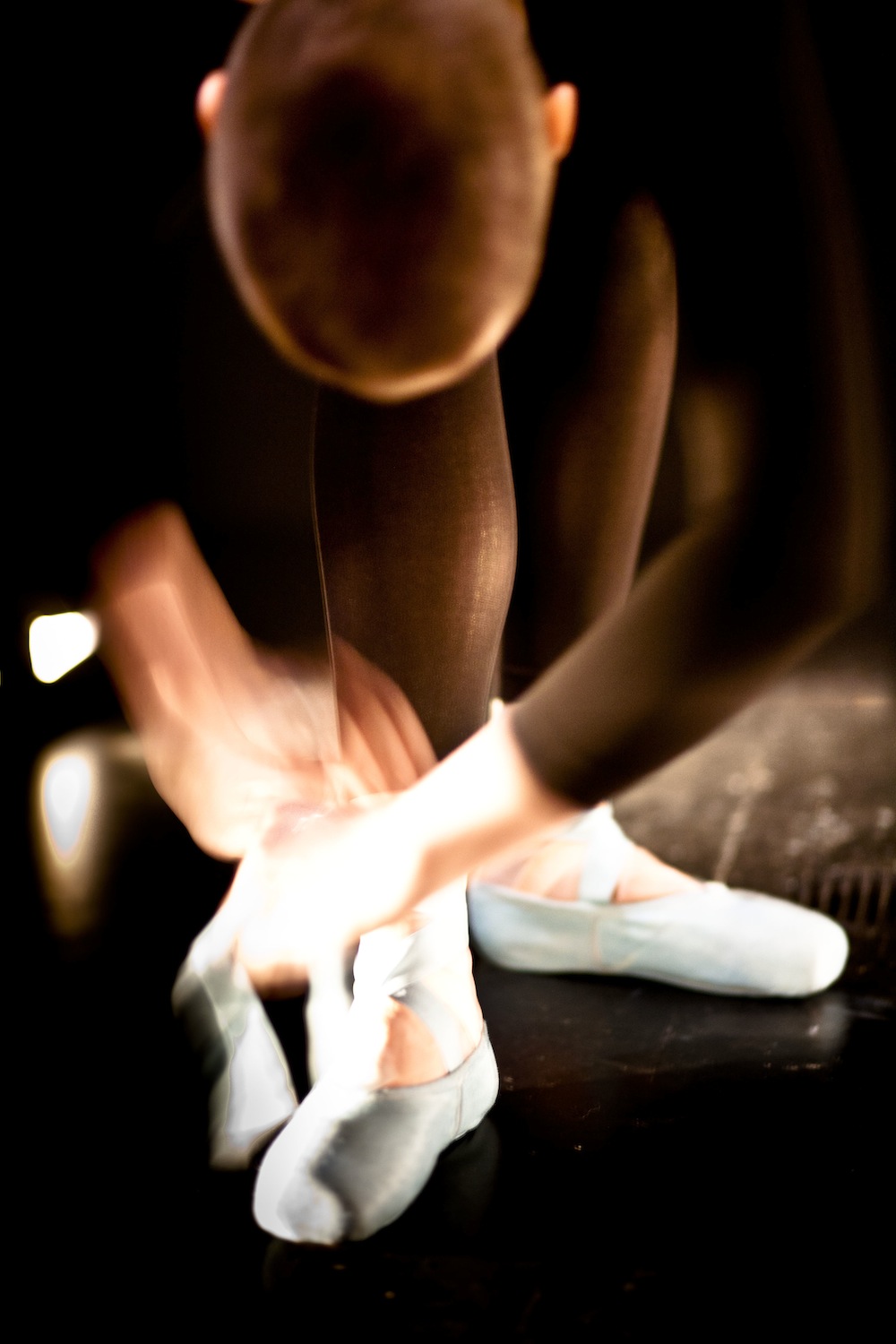
The idiosyncrasies of ballet and Seurat, in contrast to the beauty that can be perceived from them, frame the world Bocanegra creates in her sculpture. Ballet dancers don pointe shoes which are first hung on silver poles. The pointe shoes are painted in each of the fourteen colors of Seurat’s painting. Bocanegra maps her dots using the movement and sound of the dancers footwork. She chooses bourrees as her central movement and not only amplifies and distorts the toe tapping on stage, but also manipulates a recording of one dancer performing the entire fourteen movements (it always plays in the background) She describes the constant soundscape as “scary and ominous and beautiful... but not quite beautiful.”
For this iteration of the work, Bocanegra has the pleasure of collaborating with the New York Theatre Ballet. The company, while known for their traditional ballet performances, is also interested in pushing dancers outside their mold. One of the most exciting facts about this collaboration, however, is that Bocanegra and the dancers will not meet until the day before the performance. It is then she will teach them the dot code aligned with each of their colors. The next day they will perform and cross off their code both on the silver poles that hold the colored pointe shoes and in the dressing room – lest they to forget who’s next.
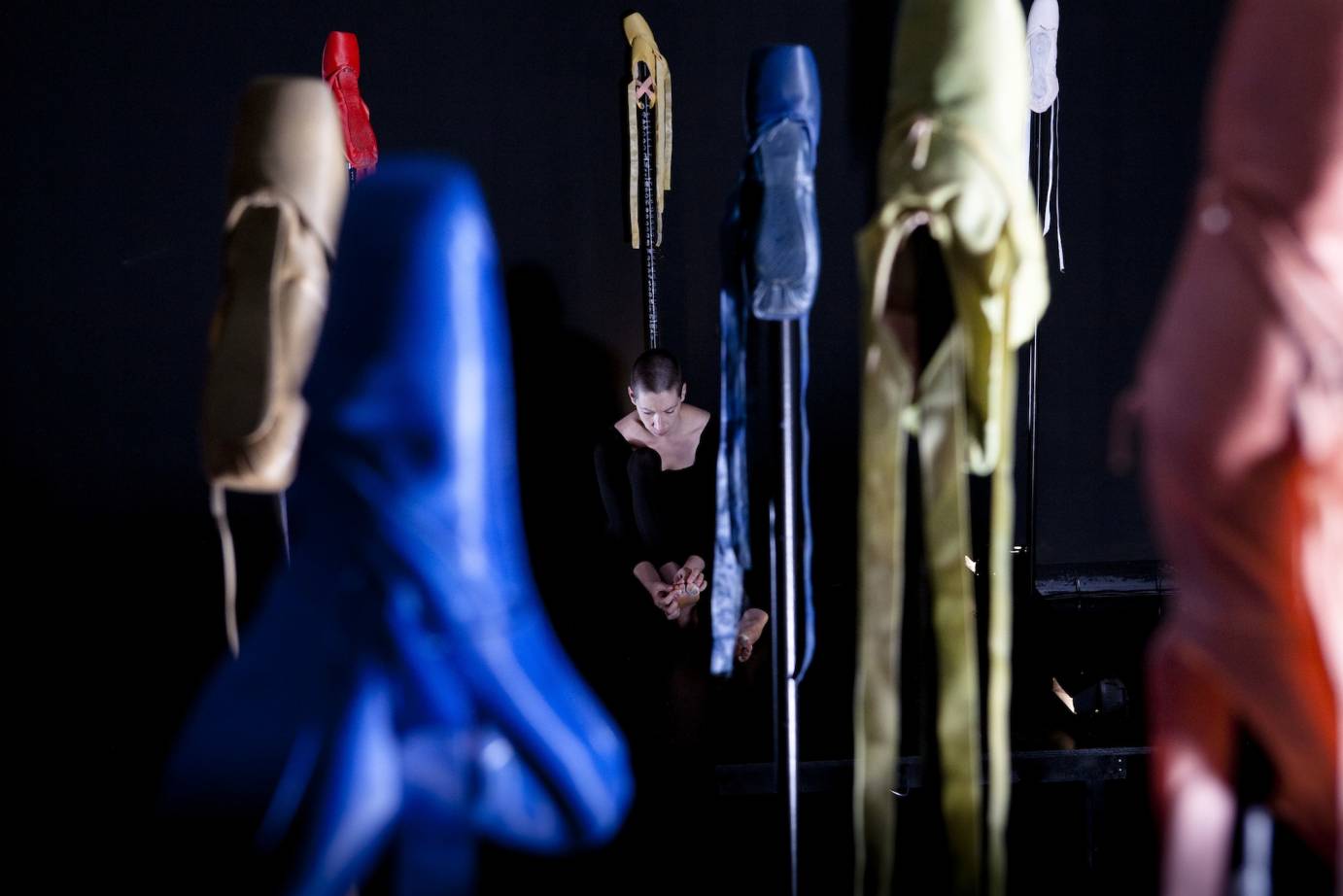
One might wonder how much choreography there is, particularly knowing that Bocanegra has made it clear that “there’s no arc in [the work]; there’s no story.” Every moment is crafted though. While there are no arm movements and minimal facial expressions. The putting on and taking off of the pointe shoes is equally as important as the “dancing.”
Bocanegra reflects heavily on how dancers enter the movement: do they step up or rise up? While they may be dressed simply, in all black, she must decide how their hair and make-up will be styled. Will it follow the traditional ballet bun and full false eyelashes, or will it match the “natural” look of the young woman in Seurat’s painting?
While Bocanegra describes the work as minimalist, the multiple dimensions are what make it a living sculpture. The work is carefully calculated, yet left to immense chance. Little girls can live their fantasies of dancing right next to ballerinas. Adults can “zone out, close your eyes, open your eyes, whatever.” You have the option of witnessing the work in daylight or in the evening, when each pole will have an individual light that draws even more attention to the brightly colored shoes.
As Bocanegra remarks, “If you come in expecting a regular dance performance, it’s not that. You’re going to be really disappointed. It’s a sculpture that’s alive.” We’ll see what happens.
Suzanne Bocanegra is an artist living and working in New York City. A recipient of the Rome Prize, she has received grants from the Pollock-Krasner Foundation, the Tiffany Foundation, the Joan Mitchell Foundation, the National Endowment for the Arts, and the New York Foundation for the Arts. Her recent work involves large-scale performance and installation, frequently translating two dimensional information, images and ideas from the past into three dimensional scenarios for staging, movement, ballet, and music.
A catalogue of Bocanegra's work called "I Write the Songs" is available on Amazon.




